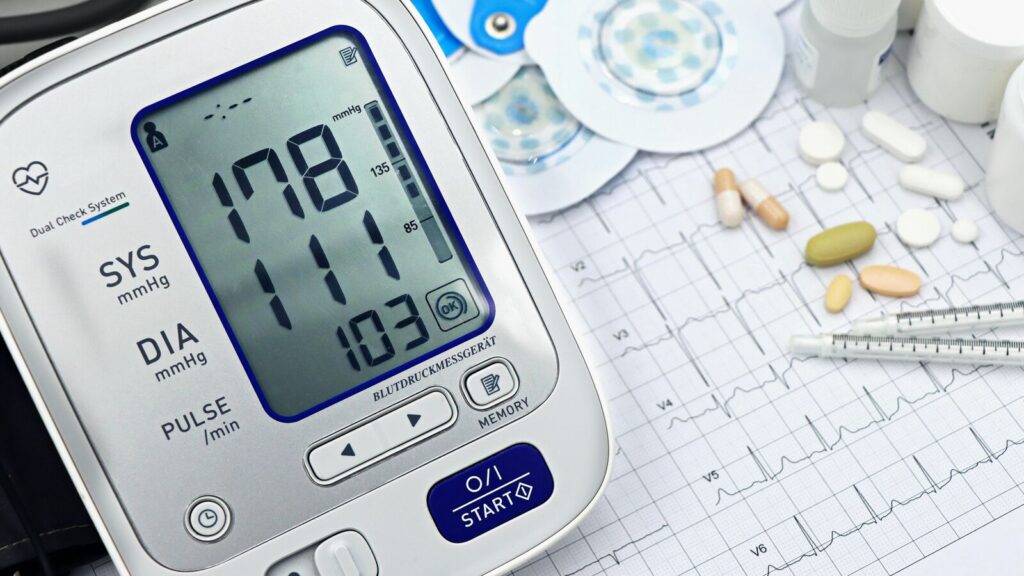I began taking my blood pressure every morning after I worked out, and it was usually under 120/80—perfectly fine. However, I noticed it was 15 to 30 points higher on the days when I didn’t exercise, which isn’t perfectly fine at all.
Do I have high blood pressure or not? The answer, unfortunately, is that I almost certainly do. When you exercise hard, your arteries open up and your entire cardiovascular system operates differently to transport more oxygen-bearing blood. If you have high blood pressure, this expanded capacity may result in lower pressure for hours, which is good for you. But you still have hypertension. Exercise is helping the problem, but it isn’t fixing it.
“What we worry is that consistent high blood pressure can cause organ damage. It’s hammering away at things like your kidney, your heart, and your brain,” says John Halliwill, a physiologist at the University of Oregon who has studied post-exercise hypotension—the scientific name for what I experienced. “If you lower that blood pressure for a couple of hours. It probably has a health benefit.”
Nearly half of U.S. adults have high blood pressure, and only 25% of them have it under control, according to the American Heart Association. Hypertension plays a role in everything from heart disease to kidney problems to dementia.
“It’s extremely serious,” says Julio Lamprea-Montealegre, a cardiologist and assistant professor at the University of California at San Francisco. “It’s probably the No. 1 cardiovascular effect—controlling blood pressure.”
The good news is that high blood pressure usually can be lowered through lifestyle changes and medication. But your doctor needs to know how high your blood pressure is on a daily basis before he or she prescribes a treatment plan. That’s why so many of us have been told to measure our blood pressure at home.
It turns out there are a lot of factors that can distort blood pressure measurements that you take at home, including the time of day, how you sit, and how you position the cuff itself. Barron’s talked with cardiologists to give you detailed instructions on how to take your blood pressure consistently and accurately at home.
The first step is to get a good blood pressure monitor. Doctors say you can find reliable monitors at this website run by the American Medical Association.
Take your blood pressure first thing when you get up. Do it before you eat, drink coffee, and take any blood pressure medicines.
Empty your bladder and sit down in a chair with your legs flat on the ground. The chair should have a back so you don’t have to exert yourself to stay upright. Don’t cross your legs as this can distort the reading. Your forearm should be flat on a table.
The cuff should go on your upper arm, roughly two fingers’ width above your elbow, so that it is at the same level as your heart. The cuff should sit on bare skin, not over clothing. It should be tight enough so that you can easily fit two fingers under its top edge. You want the inflatable part right over the main artery in your arm—which runs along the inner side of your arm parallel to your biceps muscle. Lining it up with your pinkie finger correctly positions it.
“If it’s too tight, it may read blood pressure as higher than it actually is,” says Dr. Carmen Landrau, a Houston cardiologist who speaks at American Heart Association events. “If it’s too loose, it may make your blood pressure lower than it actually is.”
After you correctly position your blood pressure cuff, wait at least five minutes without moving before taking your blood pressure. This is important. Blood pressure should be taken when your body is at rest. In my own case, my blood pressure number tumbled by as much as 20 points if I waited a few minutes after sitting down before pushing the button on my monitor.
How does the monitor actually work? As the cuff inflates, it cuts the flow of blood to your arms. Then it gradually deflates. The device measures the pressure when the blood flow returns (the top number, or systolic pressure) and the pressure when the blood flow slows between heartbeats (the bottom number, or diastolic pressure).
Take your blood pressure a second time and average the two scores to get your blood pressure. Keep a log of your scores. Dr. Lamprea asks that patients give him their blood pressure reading for the five days before their appointment. He adds, “I’m going to make a decision based on those readings and my office blood pressure reading.”
Doctors’ offices don’t always take blood pressure correctly either, Dr. Lamprea notes. Sometimes the nurse or medical technician will measure it right after you walk into the examination room without waiting five minutes. If that happens, Dr. Lamprea suggests asking if your blood pressure can be taken at the end of the exam instead.
When you go to the doctor’s office, have them take your blood pressure on each arm, Dr. Lamprea advises. One arm frequently has slightly higher pressure. That’s the one you should use for taking your blood pressure. However, if there are big blood pressure differences between the two arms, that could signify a potentially serious problem, such as blockages in the blood vessels in the chest, and you should discuss it with your doctor.
Accurate blood pressure readings are a simple and cheap way to keep tabs on a potentially worrisome health condition. Most adults should start monitoring their blood pressure periodically when they are young before it reaches dangerous levels and can’t be easily reversed, says Dr. Landrau.
“We can always get to a point of no return,” she says. “That’s why we tell people to get evaluated [starting] at a young age.”
Write to Neal Templin at [email protected]

